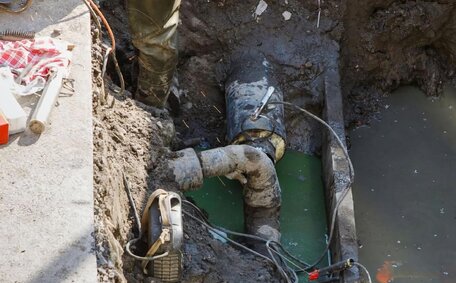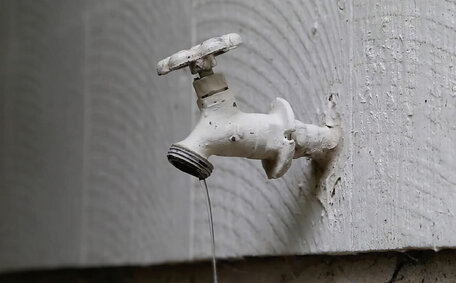Introduction to Water Heater Troubleshooting
Dealing with a lack of hot water can be frustrating, but following a systematic troubleshooting checklist can get your hot water flowing again. Whether you have an electric or gas water heater, issues like sediment buildup, faulty heating elements or thermostats, or problems with the anode rod can lead to cold water.
This article will provide a step-by-step guide to diagnosing common hot water heater problems. We’ll cover basic troubleshooting you can do yourself to pinpoint and potentially resolve the issue. We’ll also advise when it’s necessary to call a professional plumber for repairs.
As licenced plumbers located in Quakers Hill, Sydney, we have the expertise to efficiently restore hot water to your home if DIY efforts don’t do the trick. But often, methodically working through a checklist can empower homeowners to restore their hot water supply without waiting for a service appointment.
Immediate Steps When You Have No Hot Water
If you suddenly have no hot water, stay calm and methodically work through some initial troubleshooting steps. But first, keep hot cold water safety top of mind.
Start by turning off the hot water tap. Scalding water over 50°C can cause a full thickness burn in just 5 minutes. Make sure your water temperature is safe before continuing.
Check if your hot water system is still powered on. For electric units, ensure the switch or circuit breaker hasn’t tripped. For gas systems, check the pilot is lit.
Make sure to reignite it if needed.
- Visually inspect the outside of the unit. Look for any obvious leaks, strange noises, or error codes.
- Check that cold water is still running from the taps. If water does not comes out, there may be an issue with the water supply to the property.
- For electric heaters, use a multimeter to check if heating elements are functioning. Refer to the user manual for more information if you’re unsure.
- For gas heaters, inspect burners and thermocouple. Clean or replace parts if dirty or damaged.
If basic steps don’t restore hot water, contact a licenced plumber for further diagnosis. Continuing to use the system despite faults can risk injury or property damage.
Electric Water Heater Troubleshooting
When troubleshooting an electric hot water system, methodically work through the following checklist:
- Check the power supply. Ensure the circuit breaker hasn’t tripped. Reset it if needed.
- Inspect heating elements for dark spots or white powder residue indicating failure. Refer to the user manual on how to test or replace.
- Test thermostats by turning the temperature dial while checking continuity with a multimeter. Replace faulty thermostats.
- If your system has a high-limit switch, press the reset button in case it was triggered. Determine and address the overheating cause if known.
- Check electric connections are intact with no damaged wires or corrosion.
- Drain and flush the tank annually to prevent sediment buildup from reducing efficiency over time.
- Consider installing a timer to reduce energy costs. Water heating accounts for 25% of Australian household energy use.
If completing these steps doesn’t restore hot water, contact a licenced electrician or plumber to inspect your system. Continuing to use a faulty unit can pose safety risks.
Gas Water Heater Troubleshooting
Gas water heaters require specialised troubleshooting to safely inspect issues. Follow these steps:
- Verify gas supply hasn’t been shut off. Make sure your isolation valves are open.
- Inspect the pilot assembly. Clean or replace if faulty. Relight using the lighting instructions.
- Check if the water pressure meets appliance specifications. Adjust regulator if needed.
- Inspect burners and thermocouple. Clean buildup; replace damaged parts.
- Test thermostat by adjusting temperature settings while monitoring flame/pilot.
- Check flue venting is clear and correctly assembled according to codes.
- Test for leaks annually. Apply leak detector solution to connections and watch for bubbles.
- Consider installing an expansion tank to prevent pressure buildup and temperature fluctuations.
If you smell gas or are unable to relight the pilot, turn off gas supply and call a licenced gasfitter immediately. Do not attempt complex repairs yourself due to risk of fire, explosion or carbon monoxide poisoning.
Common Water Heater Issues
Some of the most common water heater problems that can leave you with cold water include:
- Faulty thermostats failing to ignite burners or heat water to the desired temperature
- Sediment buildup accumulating on elements, reducing efficiency over time
- Broken or worn heating elements not heating water correctly
- Pilot lights that won’t stay lit on gas systems
- Insufficient gas flow due to closed valves or faulty regulators
- Leaking valves, pipes or tank connections letting hot water escape
- Tripped high-limit switches cutting power due to overheating
- Noisy heaters that signal internal failures or sediment issues
Many of these common problems can often be addressed by methodically following the troubleshooting checklist steps outlined earlier. But more complex repairs like replacing elements or thermostats may require a licenced technician.
Keeping up with routine hot water heater maintenance is key to minimising issues over your system’s lifespan. This includes tasks like flushing sediment or scaling and replacing the anode rod when worn.
When to Call a Professional Plumber
While methodically troubleshooting on your own can resolve many hot water issues, certain situations call for professional assistance from licenced plumbers like those at Quakers Hill Plumbing:
- You followed troubleshooting steps but still have no hot water
- The water heater is over 10 years old and likely nearing the end of its lifespan
- There are leaks, strange noises or error codes signalling hardware failures
- Pilot lights repeatedly go out on gas systems despite relighting
- You smell gas from the water heater at any time
- The water temperature exceeds 50°C despite adjusting controls
- DIY repairs would pose uncomfortable or dangerous working conditions
Our team has extensive training and experience promptly diagnosing and repairing all makes and models of hot water systems. We stock parts on our fully-equipped vans to restore hot water and safety within three days in most cases.
For urgent appointments or questions, contact Quakers Hill Plumbing on 1300 349 338 or email jobs@quakershillplumbingservices.com.au. Our team is ready to help get your hot water flowing again.
Water Heater Safety
When troubleshooting water heater issues, safety should be your top priority before inspection. For both electric and gas systems, first then turn off the power supply at the circuit breaker or gas isolation valve. This eliminates the risk of electric shock or gas ignition while working.
Also turn the hot water off at the tap before ensuring water comes out, as scalding temperatures over 50°C can cause severe burns in just 5 minutes. Consider installing temperature limiting valves to ensure safe hot water delivery.
Use caution when you drain tank or flush it, as hot water may still remain inside, posing scald risk if it contacts your skin. Wear protective equipment like gloves and eyewear when working in the water heater vicinity.
Routinely check for gas or water leaks around the system. Apply leak detector solution to joints, watching for bubbles. Promptly address any leaks, as they pose fire, flood and health dangers long-term.
If unsure about any aspects of water heater safety protocols or troubleshooting steps, contact a licenced plumber rather than risking injury trying to fix it yourself, although there are many issues a homeowner can fix with the right information.
Preventative Maintenance Checklist
Keeping your water heater properly maintained helps avoid many issues that can leave you without hot water. Follow this preventative maintenance checklist:
- Drain and flush the tank annually to remove sediment buildup
- Check and replace anode rod if worn about every 3 years
- Test the temperature and pressure relief valve by manually opening the drain valve
- Inspect burner assembly and thermocouple; clean or replace if needed
- Test heating elements and thermostats; replace if faulty
- Check for leaks, corrosion and mineral deposits
- For gas heaters, annually test for gas leaks
- Consider filters and water softeners if you have hard water
- Keep air vents clear of obstruction for proper ventilation
Performing routine maintenance extends your water heater’s lifespan and efficiency. But for those things like complex part replacements or installations, contact our team at Quakers Hill Plumbing on 1300 349 338 or jobs@quakershillplumbingservices.com.au.
Our licenced technicians serve the Quakers Hill area and can efficiently handle all your hot water heater maintenance needs, so you can keep enjoying consistent hot water.






